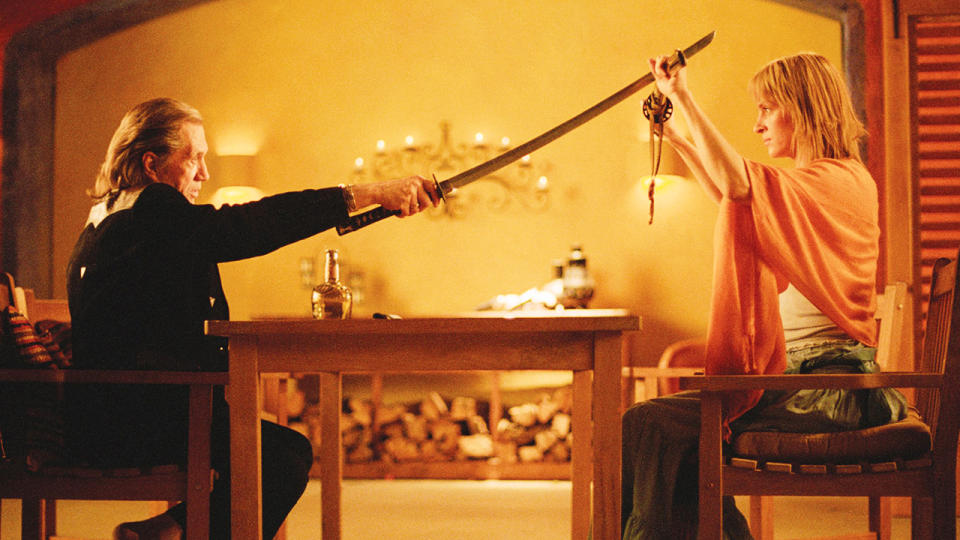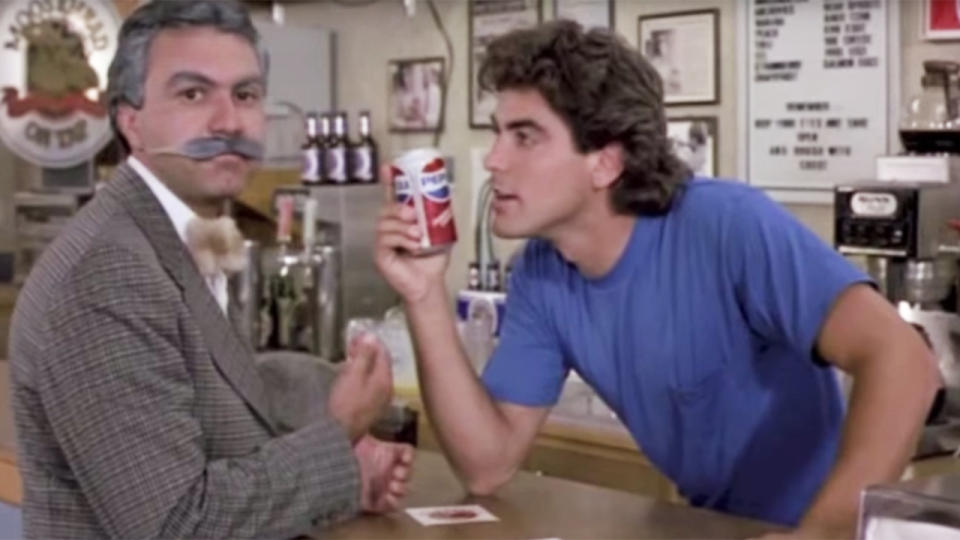10 movie productions that ran out of money
Money makes the world go round and Hollywood is no different: it doesn’t matter how big your movie is, if the budget runs out you either have to go begging cap in hand or you have to… improvise. These 10 movies suffered emergency cash-flow problems, and for better or worse, had to cut corners to make ends meet…
‘Monty Python and the Holy Grail’ (1975)

Here’s a textbook example of how you shrug off a cash problem and just go with the flow. The Pythons always had problems fully funding their projects and ‘Holy Grail’ was no exception. The movie was supposed to end in a large battle scene between King Arthur’s knights and the outraaageous French forces, but it quickly became apparent the production was out of money and couldn’t afford to shoot the scene. The solution? Just as the siege is about to begin, modern-day police enter the scene and shut down production, investigating the murder of famous historian ‘Frank’ earlier in the movie. Everyone is arrested and the film runs out of the projector, ending the movie instantly – there aren’t even any closing credits. Cheap? Yes. Genius. Also yes.
‘Kill Bill Vol. 2′ (2004)

The ‘Kill Bill’ saga was originally supposed to have a much more grandiose ending, with The Bride – wearing her wedding dress – and Bill duking it out in a swordfight on the beach at moonlight. Harvey Weinstein suggested Quentin Tarantino cut the scene as the budget had already run over and the running time was already epic, so instead of more Hattori Hanzo steel-on-steel clashes, the movie concluded with a far-more civilised stop-and-chat – although the moonlight swordfight is mentioned as a possibility. You might think that Harvey Weinstein would have profited enough from splitting ‘Kill Bill’ into two separate movies, but you’d be wrong, because Harvey Weinstein has never profited enough.
‘If….’ (1968)
Lindsay Anderson’s anarchic 1968 drama was called “evil” and “perverted” in its day, but it’s pretty harmless viewing today and has gained a cult following. The only thing that dates it slightly is the director’s choice to suddenly switch from colour to black and white film stock for seemingly random scenes. Depending on who you believe, this was either a stylistic decision on the behalf of the filmmaker to unnerve the viewer, or it was a cost-cutting exercise because the project was running out of money and investors were getting cold feet. It doesn’t matter really, because both are perfectly believable explanations, and the film remains a classic of the revolutionary genre.
‘Othello’ (1951)

Good filmmakers won’t let dollar signs – or a lack of them – compromise their vision. Orson Welles, who’s directed a few pretty pictures in his time, was facing such a dilemma with ‘Othello’ – in fact, he had to take roles in movies like ‘The Third Man’ and ‘Prince Of Foxes’ to even get it funded in the first place. Welles would beg, borrow and steal – literally, when he nicked a mink coat from a previous movie and was seen wearing it on screen – but when the movie’s costumes were impounded after a non-payment, he had to get creative. When he was absolutely sure he couldn’t half-inch any more costumes from nearby productions, Welles decided to relocate the scene of Rodrigo’s murder to a Turkish bath, simply so he could dispense with the costumes completely and clothe his cast in nothing but towels.
‘Ralph Bakshi’s Lord Of The Rings’ (1978)
The perils of committing to a trilogy – and not just any trilogy, but the most famous literary trilogy ever put to paper. Animator Ralph Bakshi was appalled when he heard that fellow director John Boorman planned to boil down Tolkien’s novel into one 100-minute movie, so decided to pursue rights for an animated version. Bakshi did secure rights for all three books from Tolkien’s daughter, but unfortunately was only able to adapt the first two books – ‘The Fellowship Of The Ring’ and ‘The Two Towers’ – into one two-and-a-half-hour movie. It wasn’t financially feasible to tackle ‘Return Of The King’ too, as the rotoscoping technique Bakshi used – which involved filming real actors and then ‘tracing’ over them with animation cels – was very costly. Apart from select versions of Disney’s ‘Fantasia’, Bakshi’s Rings adaptation was the longest animated movie of all time – but was still 33% too short.
‘Star Trek V: The Final Frontier’ (1989)

The theory that claims every odd-numbered ‘Star Trek sequel’ is rubbish holds up when one inspects ‘The Final Frontier’, directed by William Shatner but beloved by few due to obvious budgetary limitations and cheap-looking special effects. Says Shatner: “I did not get the help I needed in allocating my budget, so when it came to shooting the ending… I had run out of money. Sorry about that.” The movie’s climax was cut almost entirely and the special effects budget was decimated. “I had to use footage that I’d already shot and then spit on it a lot,” said Shatner. “I wanted to give the audience earth-breaking granite monsters spewing rocks and fire. Instead I had a few pebbles in my hand that I threw at the camera.”
‘Rocky’ (1976)
Sylvester Stallone was down to his last $100 when he pitched the screenplay for ‘Rocky’, but despite his financial troubles he still insisted he had to star in the film himself. United Artists eventually bought it and put up a budget of $2 million providing an established star, such as James Caan or Robert Redford, played the lead. Stallone played hardball and said the only way he’d sell the script was if he came attached to star. United agreed but as penance they slashed the budget by 50%: producers Irwin Winkler and Robert Chartoff would be personally liable for any dollar spent over the allocated $1 million budget. ‘Rocky’ eventually came in at $1.1 million – the only reason the movie got finished was because Winkler and Chartoff both had to mortgage their homes to raise the final $100,000.
‘El Mariachi’ (1992)
Robert Rodriguez set himself a budget of $9,000 to make his debut movie and raised a third of that by being a human laboratory rat for cholesterol drug tests. Technically, the director came in under budget – the final bill came to $7,225 – but he only did so by cutting major corners and being frugal every step of the way. Rodriguez had a ‘one take only’ rule and edited around flubbed line readings; friends, family and onlookers were cast to save money; the guns used were either water pistols or real guns borrowed from the police; much of the film was shot on the same block to save money on petrol. Rodriguez didn’t even have to bother with storyboards because there was no one to show them to – he wrote, directed, edited, lit, cut the sound, provided the special effects, performed the music and catered the movie himself. He claimed the only reason he didn’t star in it too is because there would have been no one left to operate the camera.
‘Super Mario Bros’ (1993)
The first big-budget movie adaptation of a videogame did the medium no favours: it came in severely over budget and seriously underwhelmed at the box office. The problems started when husband and wife directorial team Rocky Morton and Annabel Jankel threw away the script and began to improvise, but when they were $10 million in the can without a single finished scene to their names, their own agents threw them off the set. Even Dennis Hopper, a man who survived nightmare shoots for ‘Apocalypse Now’ and ‘Easy Rider’, said it was a total bust: “I was supposed to go down there for five weeks, and I was there for 17. It was so over budget.” Money was in such short supply, plans for a spectacular finale in which Mario scaled the Brooklyn Bridge to drop a Bob-Omb down King Koopa’s throat were completely ditched.
‘Return Of The Killer Tomatoes’ (1988)

Most famous for being one of many embarrassing early movies on George Clooney’s CV (see above), the ‘Attack Of The Killer Tomatoes’ sequel features an ingenious scene where the action comes to a stop when the film’s director’ interrupts proceedings. He informs his cast that the money has completely run out and they can’t afford to shoot the rest of the movie. It’s down to Clooney to suggest they use product placement to pay the bills (“Come on guys, it’s the Eighties!”), so we cut back to the movie, and Clooney’s barman character flogging a punter an ice-cold Pepsi Cola and a delicious Nestle Crunch bar among other treats. It’s all an in-joke, obviously, but it could have feasibly been a way to genuinely boost the film’s production budget. Notably, ‘Wayne’s World’ made the exact same gag four years later – and they allegedly were paid by the brands they jokingly featured.

 Yahoo Movies
Yahoo Movies 
